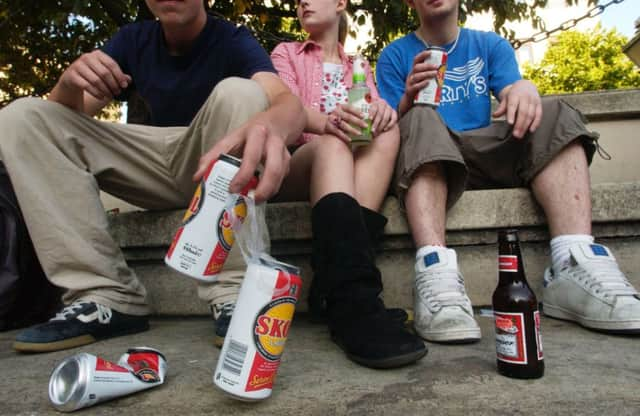Brand new risks from drink advertising


Alcohol brands are highly visible in our everyday lives. Whether it’s adverts on TV, cinema, billboards or online, in magazines and newspapers, at shops, pubs, or sponsorship of sporting and music events, there’s really no avoiding them.
In the UK, the alcohol industry spends at least £800 million annually marketing its products.
Advertisement
Hide AdAdvertisement
Hide AdThat doesn’t include all the “free” advertising alcohol brands attain through people “liking” and sharing messages on social media.
High volumes of alcohol marketing are designed to manipulate attitudes to drinking and create excessively pro-alcohol social norms. This poses a particular risk to children and young people whose critical thinking skills are not fully developed. If young people see and hear repeated positive messages that everyday drinking is normal, fun and completely risk-free, then their expectations of alcohol may well begin to reflect these messages. The health risks associated with drinking are lost in a sea of glamorous, humorous images that place alcohol at the centre of a successful life.
We know that the earlier people become aware of brands, the greater the likelihood they will use them throughout their lives, suggesting that early alcohol brand recognition is advantageous to alcohol companies, as future consumers will choose their products over others as a result of pre-established brand loyalty.
There is also very strong evidence that exposure to alcohol marketing increases the likelihood that young people will drink, reduces the age at which young people start to drink and increases the amount of alcohol they will consume once they have started drinking.
While the good news is that the number of teenagers in Scotland who are regularly drinking has fallen in recent years, underage drinking still causes significant health and social problems.
On average, 17 Scottish teenagers aged 15-19 are admitted to hospital each week for an alcohol-related condition; most are admitted over the weekend as an emergency. Scottish teens are also getting drunk for the first time at a younger age (13 or younger) than most of their European counterparts. Drinking during adolescence can have a range of negative impacts on health and wellbeing, with potentially serious and long-lasting consequences. For example, there is emerging evidence that drinking in adolescence may disrupt normal brain development with greater damage linked to heavier alcohol use.
Existing advertising codes fail to prevent under-18s from being exposed to alcohol advertising, both in terms of the quantity of alcohol adverts they see and the extent to which their content is appealing to young people. Although current rules prohibit alcohol advertising around children’s programmes, alcohol adverts are allowed during early evening family viewing when the largest number of children watch television. As a result, ten- to 15-year-olds in the UK see more alcohol adverts on television, per hour of television watched, than adults.
Alcohol marketing is also heavily present on social media. The interactive nature of digital media has given the alcohol industry unprecedented reach into the social lives of potential consumers, and a lack of proper regulatory safeguards means that this can include children and young people.
Advertisement
Hide AdAdvertisement
Hide AdAlcohol Focus Scotland has just published the results of a survey which found that ten- and 11-year-olds were more familiar with beer brands than leading brands of biscuits, crisps and ice cream. Brand recognition of Foster’s lager was particularly high (95 per cent), ranking above McVitie’s, McCoy’s and Ben & Jerry’s. More than three-quarters of the children recognised Smirnoff and two-thirds recognised WKD.
The survey also found children as young as ten (particularly boys) associated beer brands with the football teams and tournaments they sponsor. And children who use social media sites like Facebook, Instagram and Twitter had greater recall of alcohol brands and were more likely to have consumed alcohol themselves.
Along with alcohol campaigning organisations in England, we are calling on governments at Holyrood and Westminster to take effective action to reduce children’s exposure to marketing messages for an adult product with the potential to damage health and society.
The recommendations we’re making, which are similar to the alcohol marketing regulations in France, include:
• Alcohol advertising should be restricted to factual information in adult press
• Cinema advertising only to be allowed for 18 certificate films
• Phased removal of alcohol sponsorship of sports and cultural events
In the longer term, a ban on alcohol advertising and sponsorship is the only way to ensure children are not exposed to alcohol marketing.
Advertisement
Hide AdAdvertisement
Hide AdCreating a space in childhood that is protected from the intrusion of commercial interests is the right thing to do. It’s quite clear that current alcohol codes are not sufficient and more effective controls are needed to ensure alcohol marketing messages only reach adult audiences.
• Barbara O’Donnell is deputy chief executive of Alcohol Focus Scotland